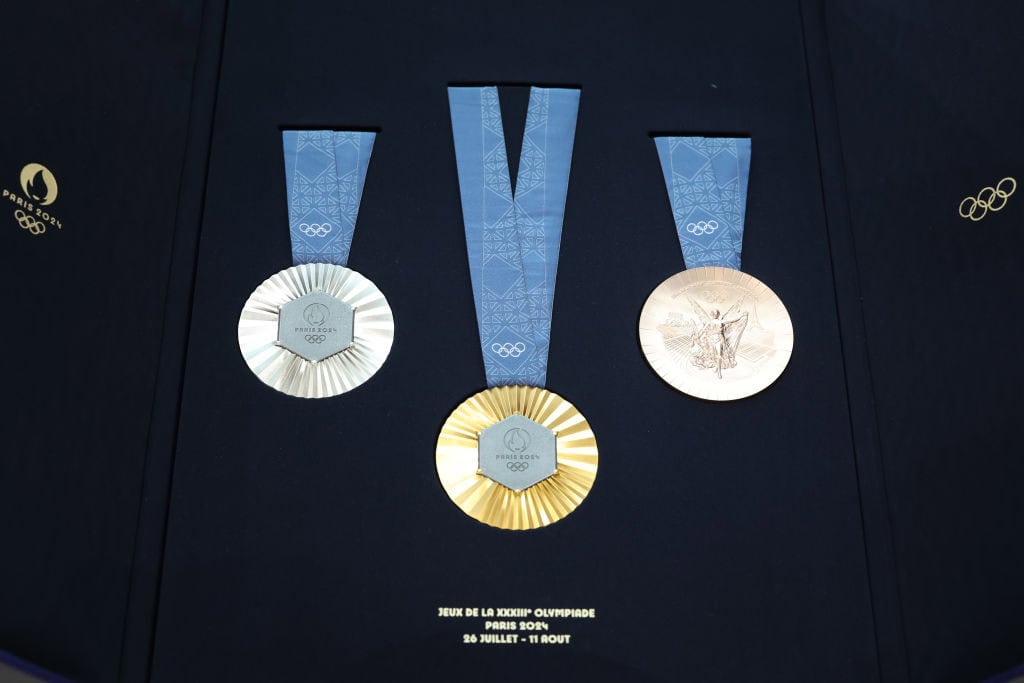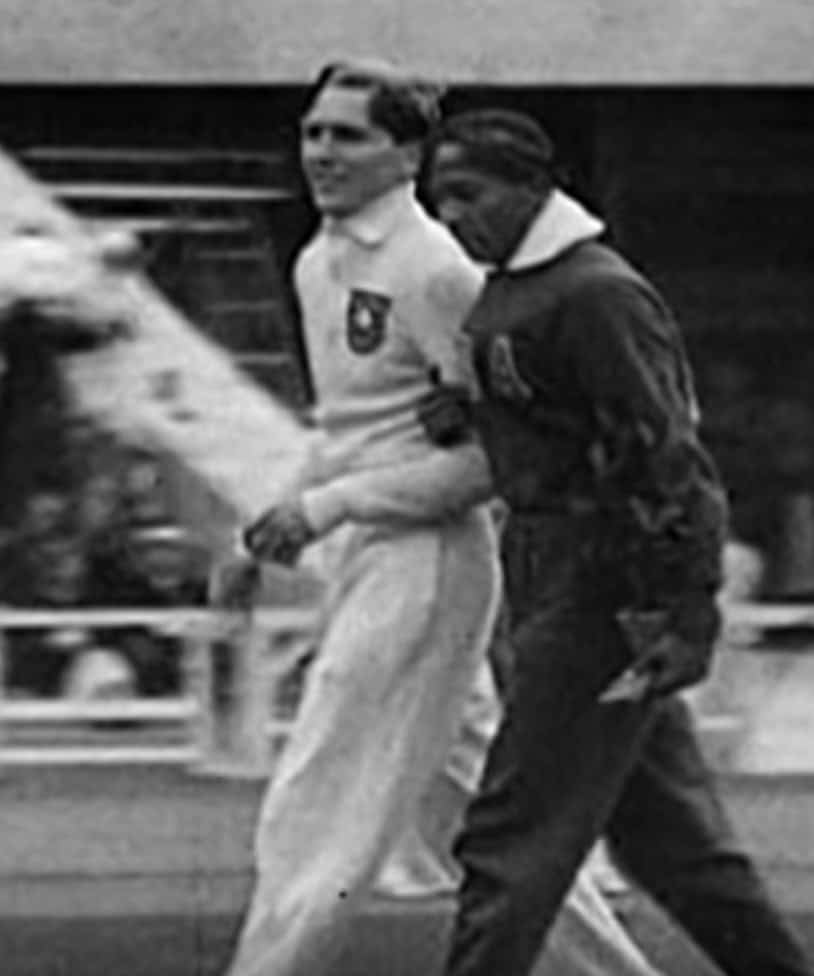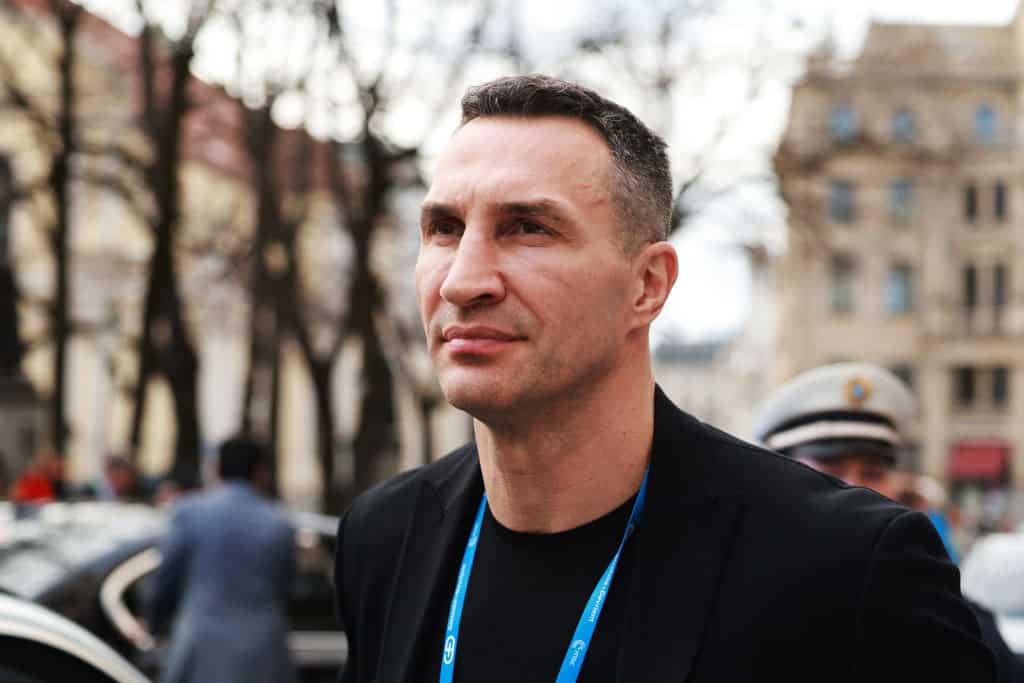Sports
How Much Gold, Silver, and Bronze Medals From the Paris 2024 Olympics Are Worth

Published:

The 2024 Paris Olympics are in full swing and as of this writing, American athletes are in the lead in the medal count, with a total of 88 gold, silver, and bronze wins. The symbolic and historical value of an Olympic medal is incalculable, but you have to admit . . . haven’t you wondered what they’re actually worth? I mean, could you pay off your house with one, or just get a couple of bags of groceries? We’ve been happy to investigate it for you from the experts at the International Olympic Committee, Forbes, Oxford Economics, and other authoritative sources.
24/7 Wall St. Insights

In ancient times, Olympic athletes competed for a wreath of olive leaves that didn’t last long. It was what the wreath symbolized that was valuable: personal excellence, public praise and recognition, a sense of accomplishment. Today’s medals are intrinsically more valuable and enduring but still do not compensate for the time and energy athletes put into them.
Understanding this can remind us that not everything worthwhile in life can be monetized. Sometimes we can feel frustrated if our best efforts in our education, relationships, careers, and creative pursuits are not bringing in the financial rewards we desire. Maybe it will help to think about the intangible benefits our efforts are achieving, such as life experience, character, and mental, physical, or spiritual growth. And, on the mundane side, this can help you not overpay for an Olympic medal if you run across one in a garage sale!


IOC guidelines require that Olympic gold medals be made of 92.5% silver (523 grams) overlaid with 6 grams of 24k gold. Oxford Economics estimates the value of these metals at about $1,027, the highest value of any Olympic medals ever awarded. If the medals were made of pure gold, their value would be around $40,000.
Scrap iron is worth only about $0.04 a pound, so the intrinsic value of the iron center of the medal is virtually zero, but its historic value as an actual relic of the Eiffel Tower could raise the desirability of any of these medals if they are sold at auction in the future.

Like gold medals, the silver second-place medals are made of 92.5% silver. In the 2024 medals, this amounts to 523 grams with a value of about $535. In January 2024 an 1896 silver medal (which was the first place medal that year), sold for $111,960. The original recipient of this particular medal is unknown.

The third-place bronze medals weigh 455 grams and are made from a mixture of copper, tin, and zinc. Oxford Economics places their value at just $4.60! Sadly, this is about what a can of Spam costs these days. Seriously?! How about adding a core of 92.5% silver to this one like the other two?

Olympic medals are the kind of honor you expect to keep for a lifetime and hand on to your descendants. But not every athlete lands lucrative corporate sponsorships or sells the movie rights to their story. Sometimes they or their descendants do find it necessary to sell their medals for more pressing needs. Simply by virtue of being actual Olympic medals, these awards can be expected to fetch more than their melt-down value. But depending on the fame and achievements of the athlete and the historical events that might be connected with that year’s Olympics, some medals can bring in hundreds of thousands or even millions of dollars. Here are a few examples:

In 1968 in Mexico City, Bob Beamon set an Olympic long jump record on his first try: 8.90m (29′ 2.5 inches). It shattered the previous world record by an incredible 22 inches, a record that would stand for 23 years. Beamon auctioned the medal through Christie’s on February 1, 2024. It brought a total of $441,000, one of the highest prices ever paid for an Olympic medal.

Luz Long was a German long jumper who won a silver medal at the 1936 Berlin Olympics. As praiseworthy as this accomplishment was, it is not why he is remembered in history. At that same Olympics, African-American runner Jesse Owens infuriated Adolph Hitler by surpassing white athletes to win four gold medals.
This is when Luz, whose name means “light,” let his light shine by walking arm-in-arm with Owens through the stadium in full view of Hitler and thousands of spectators. When his descendants decided to auction the medal along with other memorabilia from his life, the collection was called the “Beacon of Hope.” Luz’s silver fetched $488,000.

Wladimir Klitschko is a heavyweight boxer from Ukraine considered to be one of the greatest at his sport of all time. He won a gold medal at the 1996 Atlanta Olympics. He auctioned it for $1 million in 2012 to raise money to help Ukrainian children. The buyer chose to return it to him out of respect for his achievements.
After the Olympics, Wladimir and his brother Vitaly both became celebrated professional boxers, but never fought a match with each other in order to keep a promise to their mother not to fight. Vitali has been the mayor of Kyiv, the Ukrainian capital, since 2014, and Wladimir is serving in the city’s Territorial Defense Brigade during the war with Russia.

In one of the most epic Olympic victories ever, African American runner Jesse Owens won four gold medals at the 1936 Berlin Olympics. This destroyed Adolph Hitler’s desire to use the event as a propaganda victory to showcase Aryan supremacy. One of the medals passed to a good friend and his wife. After they passed away, the medal sold at auction in 2013 for $1.4 million! This is the most valuable price received for any article of Olympic memorabilia in history.
Thank you for reading! Have some feedback for us?
Contact the 24/7 Wall St. editorial team.